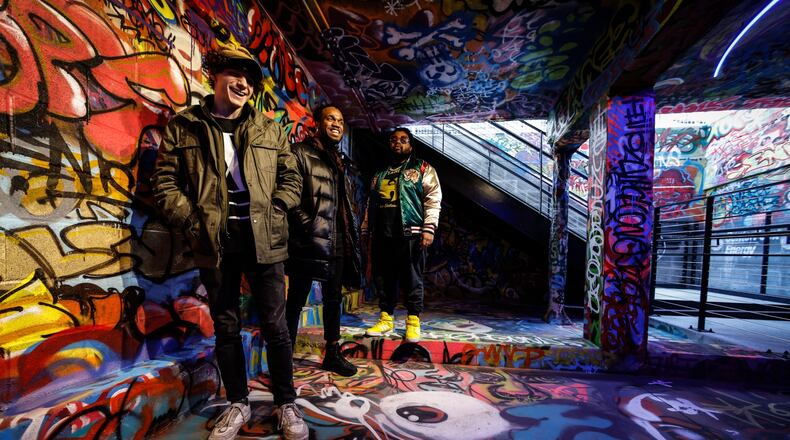One of the benefits of working at Culture Works is that I get to work with and around creatives, and I get to indulge in discussions about art with people making art. I sent an email asking about graffiti to Ben Baugham, artist name Boy Blue, who created and led the installation of the graffiti mural in the entrance to The Tank Inspired by CenterPoint Energy at the Dayton Arcade. He replied:
“Graffiti is often misjudged as a negative medium, dismissed as vandalism or chaos. In truth, it’s an uncontrolled, brutally honest expression of a city’s artists, channeling the raw pulse of their communities. Graffiti is a positive cultural force. Far from being mere decoration, this art form invites everyone, residents, visitors, and dreamers — to engage with their city in a new way. When given a space like The Tank, this raw, underground space — graffiti transforms the space into a powerful act of defiance — one that inspires change, uplifts voices, and builds up rather than tears down. My mural weaves together the city’s diverse stories — its history, resilience, and creative spirit — through bold lines and vivid colors. It’s not just art; it’s a reflection of Dayton’s heartbeat and a testament of Dayton’s unfiltered soul.”
A native Daytonian, Ben lives in Baltimore now. He comments:
“Graffiti Alley, the only legal graffiti space in the Station North Arts District, transforms an L-shaped corridor into a dynamic canvas of tags and murals by artists like Nanook and Gaia. Reflecting Baltimore’s diverse culture, this art fosters community pride, turning a neglected alley into a creative hub for photographers, dancers, and locals. By providing a legal outlet, graffiti inspires positive change, proving its power to uplift and unite neighborhoods. In that regard, Dayton could take a few pages out of the Baltimore Playbook.”
Boy Blue is not the only artist who advocates for graffiti. Jen Hunter at the Vagabond Gallery is hosting local artist TINO and DJ Martin, visiting from Paris, on Sept. 5. DJ Martin will be doing live graffiti painting outside Vagabond’s doors as well as showing his visual art in an exhibit inside Vagabond’s gallery. Then, at 9 p.m. both DJ Martin and TINO will be performing in Vagabond’s gallery. While Dayton is excited to host a graffiti artist from Paris, which has become a celebrated city of street art, the debate about graffiti rages — even in Paris. A June 6 opinion in The Guardian by Alexander Hurst asserts that “swaths of a city… look as if a giant toddler high on methamphetamines stumbled through them, scribbling on everything in sight with a giant Sharpie.”
I recently attended the Americans for the Arts conference in Cincinnati, and conducted a sort of walking survey, asking: “what do you think about graffiti?” Some folks questioned, “Do you mean tagging or art?” Some joked, “I wish Banksy would mark my building and raise its value.” There is an underground feel to talking about graffiti, I got advice on contacting street artists and on using the internet to locate one of the 116 known designated “free” walls in the U.S. No one at AFTACON disputed that graffiti is art.
Of course, a convention of artists and arts supporters isn’t a likely place to find critics. So, I asked a random selection of folks I ran into anywhere — the grocery, on the street, restaurants, and at a party. I was surprised and chided myself for making assumptions, when an older restaurant patron said he likes to watch trains because he likes all the different kinds of graffiti. In my survey, I discovered that Dayton has a fairly broad appreciation of graffiti.
Curtis Bowman is Director of Engagement for Culture Works.
About the Author


